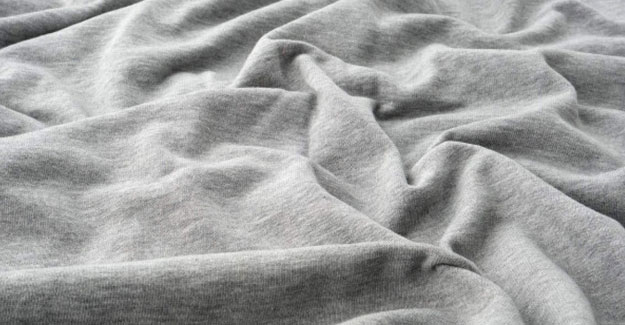
Spandex Market Opportunities Spur Sustainable Innovations
The global market value for spandex is projected to grow at a CAGR of 9.56% during 2018 - 2023. Spandex has been witnessing strong demand as demand for athleisure and compression garments has been growing over the last many years. And Covid-19 has further strengthened this trend as WFH is expected to continue for some more months. According to studies, Asia-Pacific region accounts for the largest regional share by value, and is witnessing newer applications including automobiles. Huafon Chemical launches sustainable Qianxi spandex Huafon Chemical is China's largest manufacturer of spandex, with annual production capacity of 185,000 tons. Many apparel manufacturers use products from Huafon Chemical for their collections - but few brands know it. With the launch of its own brand strategy and new sustainable spandex products, China's largest producer of spandex aims to change this. Founded in 1999 under the name Huafon Spandex, Huafon's market share in China was around 24% in 2019. Sales offices in China, Turkey and South Korea support further growth. With a strong R&D focus and collaborations with renowned research institutes, universities and textile manufacturers such as CAS (Chinese Academy of Sciences), Donghua University, BASF, Best Pacific, Texhong, etc., Huafon aims to further advance the technical and sustainable development of spandex production. Sustainable spandex The proportion of spandex in sportswear is usually between 10-30%. Developing sustainable solutions here will help significantly to reduce the ecological footprint of modern stretch fabrics. To achieve this goal, Huafon relies on recycling, low supply chain energy consumption and new dyeing technologies. Qianxi Recycled Spandex In 2017, Huafon started a recycling project. Qianxi Recycled Spandex uses up to 100% recycled spandex from production waste, reducing the environmental footprint without cutting back on quality and performance. In 2018, Huafon became the first spandex factory in China to receive Global Recycled Standard (GRS) certification. Since the raw materials of recycled spandex are currently obtained exclusively from production waste, Huafon, as the largest producer in China, can guarantee high and stable production volumes. Energy Saving: Qianxi Easy-Setting Spandex and Qianxi Eco-Setting spandex The heat setting process of fabric with spandex requires high temperatures (normally about 195?) and thus high energy consumption. Huafon has developed Qianxi Easy-Setting Spandex, which operates at temperatures 10°C to 15°C lower than conventional spandex fibres in the fabric heat setting process. In addition, the lower heat setting temperatures increase the softness and whiteness of nylon/spandex or modal/spandex fabrics. Huafon has also introduced Qianxi Eco-Setting spandex fibre. Here, Huafon has succeeded in further reducing the temperature in the fabric heat setting process, about three times higher heat setting efficiency compared to conventional spandex fibres. This new type of spandex is produced by the dry-spinning process, so it retains adequate elasticity and has stable performance. It's particularly suitable for heat-sensitive fibres such as bio-based polylactide fibres (PLA) and polypropylene (PP). Dyed spandex: More efficient dyeing technology with Qianxi Black spandex Huafon's Qianxi Black Spandex, is a black spandex fibre that has already been dyed with dope-dye technology during the spinning process. In combination with other textile fibres such as black nylon or black polyester, which have also been dope-dyed, the usual dyeing process of the yarn or textile surface can be completely eliminated. This saves energy, water and wastewater. In addition, the colour pigment is distributed quite evenly in the spandex, which enables a perfect colour result and high colour fastness. Hyosung's increased spandex capacities to come up in 2021 Hyosung is the world's largest spandex manufacturer with its brand Creora, with a 32% market share. The company is ramping up its investment in spandex in Turkey and Brazil to capture rising demand for stretchable fibre. Hyosung T&C, a fibre production unit of Hyosung Group, will invest 60 billion won (US$ 52.9 million) in the Cerkezkoy area near Istanbul, Turkey to more than double the size of its spandex production plant with an annual capacity of 15,000 metric tons by July 2021. The spandex plant production capacity in Turkey would be about 40,000 tons when the expansion is completed. Hyosung T&C has been increasing its market presence in Europe through two additional expansions after establishing a production base in Turkey in 2008. The firm expects that this expansion will be able to meet the recovering global fibre demand of 750 trillion won. Hyosung T&C, will invest 40 billion won (about US$ 36 million) by December 2021 to increase the production volume of its spandex plant by 10,000 metric tons in Santa Catarina, southern Brazil. Upon completion of the expansion, the production capacity of the firm's Santa Catarina plant will increase to a total of 22,000 tons. Tariffs in the Brazilian market are twice as high as in other regions, with the import tariff on spandex reaching 18%. This requires a local production base to maintain a competitive price, Hyosung said. In addition, Brazil has borders with 10 of the other 12 countries in South America and also has good waterways network, making it advantageous for exports to nearby areas, the company said. Hyosung T&C has strengthened its market dominance in the Americas after establishing a production base in Brazil in 2011 and is currently ranked first with a 65% market share in Brazil. According to US-based research firm Business Wire, global demand for spandex is growing at 6-7% per year. The growth rate of spandex is more than double that of general apparel fibres, which grow 2-3% annually.
Textile Excellence
If you wish to Subscribe to Textile Excellence Print Edition, kindly fill in the below form and we shall get back to you with details.








